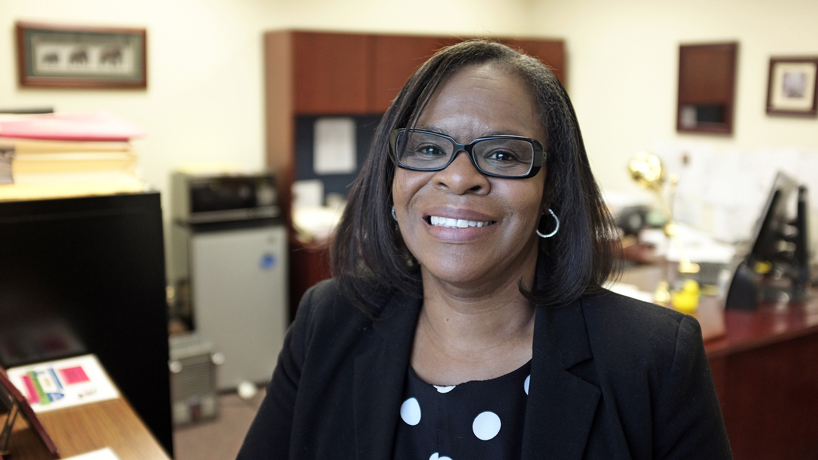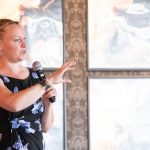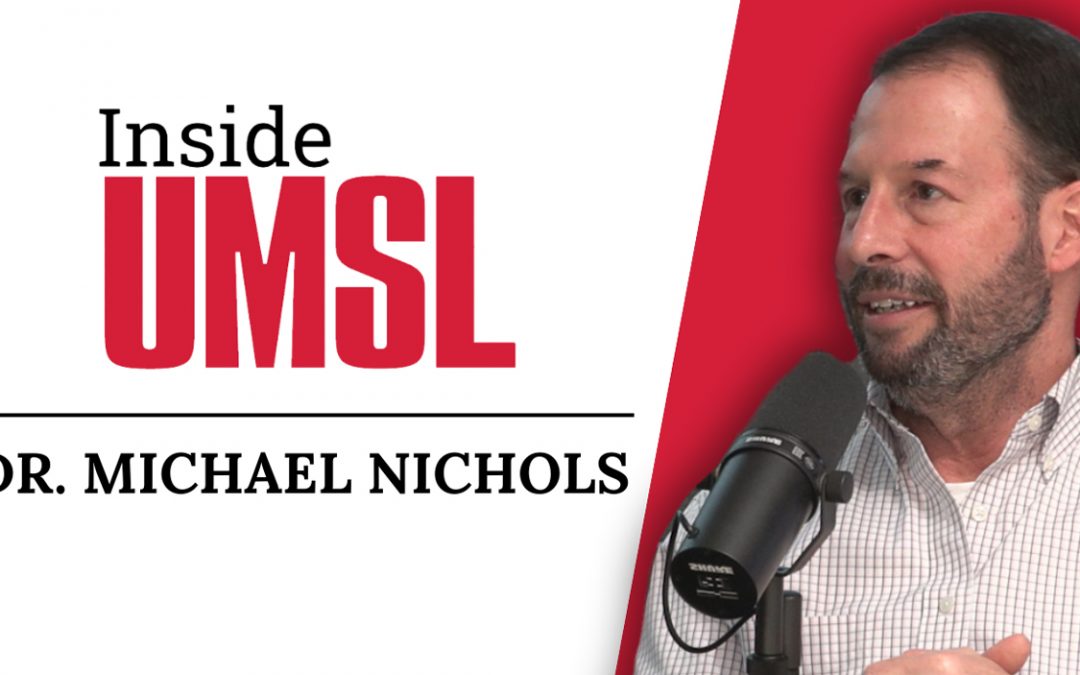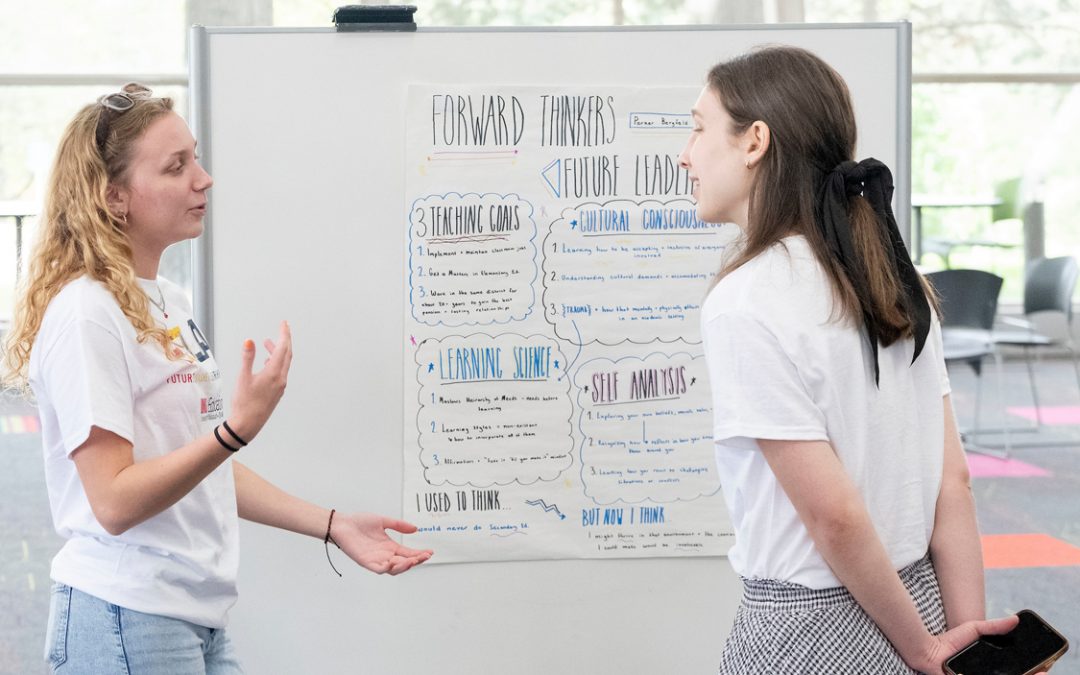
Missouri Institute of Mental Health research associate and substance use counselor Brendolyn Bailey-Burch is the principal investigator for a substance use and HIV/AIDS prevention program she hopes will provide resources for St. Louis youth to learn more about health and also provide outlets for positive expression. (Photos by August Jennewein)
As principal investigator, Brendolyn Bailey-Burch led a team of Missouri Institute of Mental Health researchers at the University of Missouri–St. Louis in securing over $1 million to implement a new substance use, HIV/AIDS and hepatitis prevention project for African American male and female youth from ages 13 to 24.
The grant was recently awarded by the Substance Abuse and Mental Health Services Administration with a goal of serving a total of 960 participants in St. Louis City and County.
“The African American community in St. Louis is disproportionately affected by HIV/AIDS and substance use issues,” said Bailey-Burch. “If we can offer youth an interesting program, keep their attention and teach them about the harmful effects of substance use and dispel myths about HIV/AIDS, they can begin to make healthy lifestyle choices. And then maybe they won’t become a statistic down the line. It’s all about saving lives.”
After years of practice in the helping profession, Bailey-Burch along with team members LaToshia Boyd-Lee and Jeffrey Noel, have learned one important secret to spearheading successful youth programs at UMSL.
“You have to pair the education with engagement and a fun element,” said Bailey-Burch. “One unique feature about our latest project is that it is designed to promote positive prevention messages and to change community norms through social marketing and media campaigns that will be developed by project participants.”
The program’s social media and marketing components may use Facebook, Twitter, Instagram and other popular platforms as a method to share those messages and promote health awareness.
“This time around, we hope to see a series of high-quality and creative social media campaigns produced by teens and young adult college students working with them,” said Noel, who is the evaluator for the project.
“We hope UMSL students will act as big brothers and sisters who will help manage the marketing campaign and provide younger participants with encouragement,” said Bailey-Burch.
Staff members agree that building a sense of community and developing lines of communication between generations is another important component of outreach and prevention program success.
Boyd-Lee, who will manage the program’s daily operations, seeks to create safe spaces for serious communication about health education among participants during the program interventions.
“I also hope the program will help decrease stigma,” she said, “and encourage youth and young adults to be responsible for their own health and not shy away from getting counseling, substance use screenings, HIV, STD and hepatitis testing if needed.”
According to Bailey-Burch, the last key to a successful youth prevention program is continued communication.
“Participants always want to come back and do our programs again, and families write to us about how they are continuing important health dialogues,” she said. “Hearing these success stories motivates us to continue the work that we do.”















